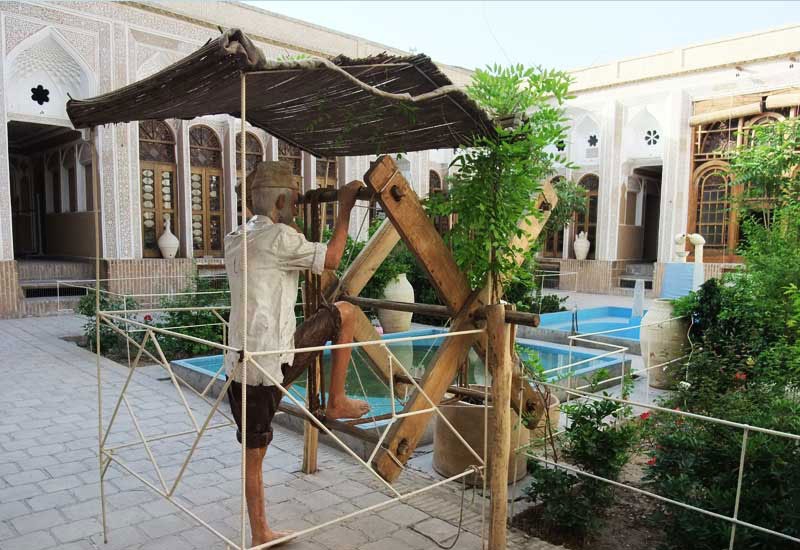Yazd is a dry city which is located in the desert, and one of the major issues was getting water, so much so that it has a museum dedicated to explaining how it was obtained. This museum will explain all about qanat, an elaborate tunnel system used to extract groundwater. The tunnels were hand-hug and just big enough to fit one person.
Water from the qanat is stored in “ab anbar”, water reservoirs, which were usually adorned with badgir, windcatchers, to keep the water near ice cold temperature. The actual Museum is in the basement. This Museum displays the tool, techniques used for the past 4000 years in Iran in creating underground waterways (called Qanats) and connecting them to the city and field locations for agricultural and other uses. Before the Romans built their aqueducts, Iranians had built an extensive system of underground qanats (aqueduct).
The Museum building has once been a merchant’s house built in 1929. Two qanats are running beneath the Museum at different levels, which are reachable through a special stairway called “Payab”. This Museum has put on display a variety of water objects from qanat to water ownership documents. Some parts of the house structure represent some part of water history in the region. For example the stairway to qanat or a reservoir on the roof can show how water technologies and everyday life have been interwoven in the past.
Ticket price
150000 Rials
Visiting time
8a.m. to 7p.m.
Location
Ghiam street
Access way
By car,taxi and bus
Nearby attraction
Amirchakhmaq squar, Khan bazaar
best time to visit iran is related the city you want go.yazd in spring and winter is good.
